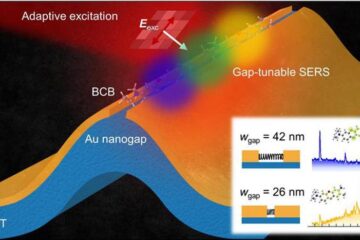Engineering molecular interactions with machine learning

Protein surfaces vary widely and are dynamic, making it hard to predict how and where binding events will occur.
Credit: © Ella Maru Studio
By using deep learning-generated ‘fingerprints’ to characterize millions of protein fragments, EPFL researchers have computationally designed novel protein binders that attach seamlessly to key targets, including the SARS-CoV-2 spike protein.
In 2019, scientists in the joint School of Engineering and School of Life Sciences Laboratory of Protein Design and Immunoengineering (LPDI) led by Bruno Correia developed MaSIF: a machine learning-driven method for scanning millions of protein surfaces within minutes to analyze their structure and functional properties. The researchers’ ultimate goal was to computationally design protein interactions by finding optimal matches between molecules based on their surface chemical and geometric ‘fingerprints’.
Four years later, they have achieved just that. In a paper published in Nature, they report that they have created brand-new proteins called binders that are designed to interact with four therapeutically relevant protein targets, including the SARS-CoV-2 spike protein.
Engineering a perfect molecular match
Physical interactions between proteins influence anything from cell signaling and growth to immune responses, so the ability to control protein-protein interactions is of great interest to the fields of biology and biotechnology. While textbook depictions of protein binding may look as simple as fitting puzzle pieces together, the reality is more complex: protein surfaces vary widely and are dynamic, making it hard to predict how and where binding events will occur.
“A puzzle piece is two-dimensional, but with protein surfaces, we are looking at multiple dimensions: chemical composition, such as positive versus negative charge interactions; shape complementarity, curvature, etc.,” explains LPDI PhD student and co-author Anthony Marchand.
“The idea that everything in nature that binds is complementary – for example, a positive charge binds with a negative charge – has been a long-standing idea in the field, which we captured in our computational framework.”
To design novel protein binders, the researchers used MaSIF to create protein surface ‘fingerprints’, and then identified complementary surfaces for key protein target sites from a database of fragments. They then digitally grafted the fragments onto larger protein scaffolds, and selected the resulting binders predicted to interact best with their targets. After synthesizing and testing these selected binders in the lab, the researchers were able to confirm the computationally generated hypothesis.
“The fact that we’re able to design novel, site-specific protein binders in just a couple of months makes this method very interesting for therapeutics. It’s is not just a tool: it’s a pipeline,” Marchand says.
‘Straight from the computer’
The researchers were developing protein binders for three major cancer immunotherapy targets when the COVID pandemic hit, so they added the SARS-CoV-2 spike protein to their list. Using their approach, the four binders they produced displayed excellent affinities for their targets.
MaSIF’s success rate, combined with its speed and ability to produce high-quality, site-specific designs, all demonstrate its therapeutic potential. For example, the ability to generate accurate protein binders so rapidly could be a big advantage for epidemiological applications, as in the case of the SARS-CoV-2 spike protein. Marchand also sees potential for the pipeline to facilitate the development of chimeric antigen receptor (CAR-T) proteins, which can be engineered to allow patient immune cells to target cancer cells.
“Further advances in machine learning methods will help improve our method, but our work today already provides a strategy for developing innovative therapies to benefit patients through the rapid design of protein-based therapeutics – straight from the computer.”
Journal: Nature
DOI: 10.1038/s41586-023-05993-x
Method of Research: Computational simulation/modeling
Subject of Research: Not applicable
Article Title: De novo design of protein interactions with learned surface fingerprints
Article Publication Date: 26-Apr-2023
Media Contact
Celia Luterbacher
Ecole Polytechnique Fédérale de Lausanne
celia.luterbacher@epfl.ch
Office: 41-216-938-759
Media Contact
All latest news from the category: Life Sciences and Chemistry
Articles and reports from the Life Sciences and chemistry area deal with applied and basic research into modern biology, chemistry and human medicine.
Valuable information can be found on a range of life sciences fields including bacteriology, biochemistry, bionics, bioinformatics, biophysics, biotechnology, genetics, geobotany, human biology, marine biology, microbiology, molecular biology, cellular biology, zoology, bioinorganic chemistry, microchemistry and environmental chemistry.
Newest articles

“Nanostitches” enable lighter and tougher composite materials
In research that may lead to next-generation airplanes and spacecraft, MIT engineers used carbon nanotubes to prevent cracking in multilayered composites. To save on fuel and reduce aircraft emissions, engineers…

Trash to treasure
Researchers turn metal waste into catalyst for hydrogen. Scientists have found a way to transform metal waste into a highly efficient catalyst to make hydrogen from water, a discovery that…

Real-time detection of infectious disease viruses
… by searching for molecular fingerprinting. A research team consisting of Professor Kyoung-Duck Park and Taeyoung Moon and Huitae Joo, PhD candidates, from the Department of Physics at Pohang University…





















